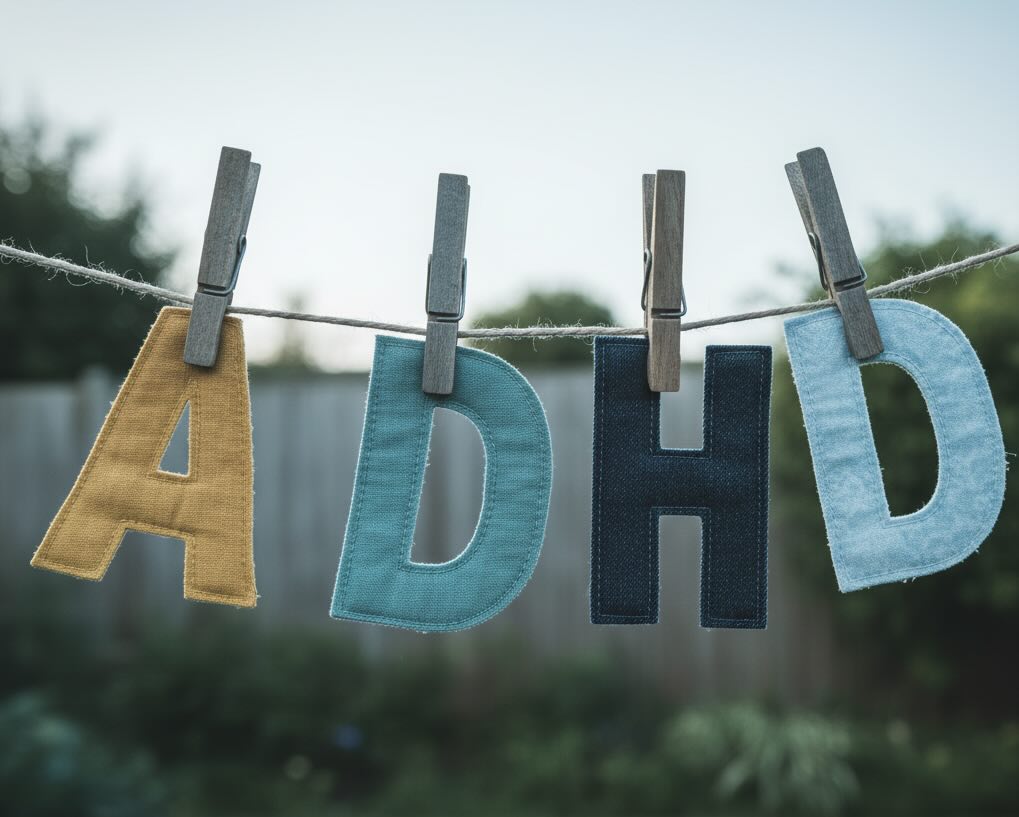What is Cannabis Dependence?
Everyday language vs diagnostic terms
People often say “cannabis addiction” or “marijuana dependence” to describe feeling unable to cut back or function without using. In clinical language, you’ll see terms like:
- Cannabis use disorder (CUD): in DSM-5 / DSM-5-TR, this is the main cannabis-related diagnosis. It describes a problematic pattern of cannabis use leading to clinically significant impairment or distress, based on a set of behavioural, psychological and physical criteria over 12 months.
- Cannabis withdrawal: an official DSM-5 diagnosis for the cluster of symptoms that can occur when heavy, prolonged cannabis use is stopped or sharply reduced (e.g. irritability, sleep problems, reduced appetite, anxiety).
- Cannabis-related disorders: DSM-5 also recognises cannabis intoxication and several cannabis-induced conditions (such as psychotic, anxiety, sleep and other disorders) when symptoms are severe and clearly linked to cannabis.
- Disorders due to use of cannabis: in ICD-11, cannabis has its own group (e.g. “harmful pattern of use” and cannabis dependence), as well as induced disorders like cannabis intoxication, withdrawal and cannabis-induced psychotic disorder.
Cannabis is the most widely used illicit drug in the world, and many people use it without meeting the criteria for a disorder.
Cannabis Dependence Symptoms
Core features of problematic use
- Loss of control
- You regularly use more than you intended. You plan to have “just a couple of puffs” or use only on weekends, but end up using heavily or most days.
- You've tried to cut back or stop multiple times, but quickly slide back into old patterns.
- Using more than intended
- Edibles, dabs, vapes or high-THC strains lead to stronger effects than you meant, but you keep using them.
- Time and focus spent getting, using and recovering from cannabis
- Thinking a lot about when you can use next.
- Going out of your way to get cannabis, or feeling unsettled if you don’t have a supply.
- Continued use despite causing stress, impairment or harm: You keep using even though you know it’s linked with:
- Motivation issues at school, university or work
- Loss of memory, concentration or "mental sharpness"
- Ongoing conflicts with your partner, family or friends
- Worsening anxiety, low mood, mood swings, paranoia or psychotic symptoms, including hallucinations
- Legal, financial or driving problems
- Physical health issues such as chronic cough or breathing issues when smoked.
- You experience tolerance, needing stronger strains, larger amounts, or more frequent use to feel the same “high” or relief.
- You experience strong cravings or feel you “can’t relax/sleep/cope” without it.
- You experience withdrawal symptoms when you cut down or stop (see below).
Physical and psychological symptoms of heavy use
Heavy or long-term cannabis use, especially with high-THC products, can lead to:
- Red or bloodshot eyes
- Dry mouth, increased appetite (“the munchies”)
- Faster heart rate, palpitations or light-headedness
- Chronic cough, wheeze or chest tightness (with smoked cannabis)
- Fatigue, low energy or “amotivational” feelings
- Short-term memory problems: forgetting conversations, losing track of tasks
- Difficulty focusing, slower thinking, feeling “foggy”
- Anxiety, panic, or feeling detached/unreal (depersonalisation/derealisation)
- Changes in perception (e.g. altered sense of time, sensory distortion)
- Sleep disturbance – difficulty falling asleep without cannabis, vivid dreams when stopping.
In some people, especially those with a personal or family history of psychosis or bipolar disorder, heavy cannabis use is associated with an increased risk of psychotic episodes or relapse, particularly with high-potency products.
Cannabis withdrawal
If you suddenly stop or sharply reduce daily or near-daily cannabis use after a long period, you may experience withdrawal. Symptoms often start within 24–72 hours, peak over about a week, and for some people gradually improve over 1–2 weeks or more.
Common withdrawal symptoms include:
- Irritability, anger or aggression
- Anxiety, restlessness or feeling “on edge”
- Low or “flat” mood
- Sleep problems: trouble falling asleep, frequent waking, vivid or unpleasant dreams
- Reduced appetite or weight loss
- Headaches, sweating, chills, stomach discomfort or general aches
- Difficulty concentrating, feeling mentally “sluggish”
- Strong cravings to use cannabis again.
Withdrawal from cannabis is uncomfortable but not usually medically dangerous in otherwise healthy people,but it can be difficult enough that many people return to use, reinforcing dependence.
How it can feel day-to-day
People who feel dependent on cannabis often describe:
- Feeling trapped between needing cannabis to cope, and seeing the downsides clearly
- Planning the day around when they can use or be high
- Struggling to feel motivated or interested in activities that used to matter
- Forgetting things, missing appointments, or underperforming at work or study
- Feeling more withdrawn, anxious or paranoid in social situations
- Trying to cut down repeatedly and feeling ashamed or frustrated when it doesn’t last.
When to seek help
Get urgent or emergency medical help straight away if you:
- Have chest pain, severe shortness of breath, fainting or seizure-like activity after using cannabis or other substances
- Have very severe vomiting and can’t keep fluids down (possible cannabinoid hyperemesis syndrome)
- Have intense paranoia, hallucinations, confusion, or feel you might hurt yourself or someone else
- Have thoughts of self-harm or suicide
Talk to a GP or other qualified health professional promptly if:
- You’ve tried to cut down or stop but can’t, and cannabis is clearly affecting your mental health, work, study, relationships or finances
- You experience withdrawal symptoms (irritability, insomnia, anxiety, low mood) when you stop
- You’re using cannabis to cope with other problems (trauma, anxiety, depression, ADHD, chronic pain)
- You have (or are at risk of) psychosis, bipolar disorder, major depression, cardiovascular issues, pregnancy, or other health conditions and use cannabis regularly.
How Do You Assess Cannabis Dependence?
There’s no single blood test for cannabis dependence. Assessment is about patterns, impact and context. Formal diagnosis typically involves a few steps:
- Start with a broad multi-disorder mental health screen: Because cannabis interacts strongly with sleep, mood, anxiety, psychosis risk, attention and other substances, it’s important to look at everything together, not just cannabis in isolation. A multi-condition assessment, like Loffty, can help you:
- See how cannabis use sits alongside anxiety, depression, bipolar disorder, psychosis, ADHD, trauma, and co-use of alcohol, nicotine or other drugs
- Notice links between your cannabis use and symptoms (e.g. panic, low mood, lack of motivation, sleep problems)
- Mental health history (anxiety, depression, bipolar, psychosis, trauma) and family history
- Create a structured picture to take to your psychologist, psychiatrist or other mental health specialist.
- Clinical interview: Your mental health specialist will consider whether you meet criteria for cannabis use disorder and other cannabis-related diagnoses using DSM and/or ICD frameworks. They will usually ask more questions about:
- How often you use cannabis, how much, and in what forms (flower, vapes, edibles, concentrates)
- Potency (e.g. high-THC products), and whether CBD products are also used
- Attempts to cut down or stop, and what happened
- Withdrawal symptoms when you reduce or stop
- How cannabis use is affecting work, study, finances, relationships and legal issues.
- Medical checks: When tailoring a plan, your specialist will also look after your safety by:
- Checking vital signs (heart rate, blood pressure, weight)
- Reviewing respiratory health if you smoke or vape cannabis
- Considering blood tests or other investigations if indicated
- Assessing psychosis risk, suicidality and other mental health concerns.
How Do You Treat Cannabis Dependence?
The aim isn’t to shame you for using cannabis. It’s to help you move from compulsive, harmful use toward a pattern that supports your mental and physical health – which might be no cannabis, less cannabis, or safer patterns of use, depending on your situation, local laws and your clinician’s advice.
Foundations: understanding and planning
Helpful first steps:
- Know your actual use
- How many days per week do you use
- How many joints, cones, vape sessions, edibles, etc.
- Typical strength (THC%) and whether you’re using concentrates/dabs
- Clarify your goal
- Quit completely
- Or move to a safer pattern (e.g. less frequent, lower potency, no morning use, only in safer contexts)
- Identify key triggers
- Stress, boredom, pain, insomnia, social situations, trauma reminders, particular people or places.
Keeping a simple cannabis diary (use, context, mood and cravings) for a couple of weeks can be a powerful tool for you and your clinician.
Gradual reduction (“tapering”)
For many people, especially heavy daily users, a gradual reduction can be easier than stopping overnight:
- Reduce the amount: (smaller joints, fewer cones, weaker products) over days or weeks.
- Reduce frequency: introduce cannabis-free days, then increase them.
- Avoid “wake-and-bake”: delay first use each day and shorten the window of use.
- Plan for withdrawal: schedule extra rest, supportive activities, and healthy routines.
If you use very heavily, have significant mental health issues (especially psychosis or bipolar disorder) or other serious health problems, it’s wise to plan your reduction with a qualified professional.
Psychological and behavioural strategies
Research consistently supports psychosocial treatments as first-line options for cannabis use disorder. Key approaches include:
- Cognitive-behavioural therapy (CBT)
- Understanding how thoughts, feelings and situations link to cannabis use
- Building alternative coping strategies for stress, boredom, pain or difficult emotions
- Problem-solving around triggers and high-risk situations
- Motivational enhancement therapy (MET)/motivational interviewing (MI)
- Exploring your own reasons to change (or not) in a non-judgemental way
- Strengthening your sense of autonomy and confidence in making changes
- Contingency management (CM)
- Providing structured rewards or incentives for negative drug screens or meeting change goals
- Evidence suggests CM can enhance abstinence rates when combined with CBT/MET.
These therapies can be delivered individually or in groups, in person or via telehealth. They often combine psychoeducation, goal-setting, skills training, and relapse-prevention planning.
Medication
Currently, no medication has been formally approved specifically for cannabis use disorder. However, clinicians may sometimes use medication to:
- Help manage withdrawal symptoms (e.g. short-term sleep support or anxiety management)
- Treat co-occurring conditions (such as depression, anxiety, ADHD, bipolar disorder or psychosis).
Trials of cannabinoid agonists and other compounds show mixed results, and more research is needed before clear recommendations can be made.
Any medication decisions should be made with a qualified prescriber who understands your full health picture.
Special situations
Some circumstances need particular care and professional guidance:
- Adolescents and young adults: the developing brain is more vulnerable to the cognitive and mental health effects of heavy cannabis use. Early, heavy use is linked to higher risk of dependence and other disorders.
- Psychosis or bipolar disorder: cannabis (especially high-THC products) increases relapse risk; many guidelines recommend avoiding cannabis entirely in these conditions.
- Pregnancy and breastfeeding: cannabis can cross the placenta and pass into breast milk; most health authorities advise avoiding cannabis during pregnancy and breastfeeding.
- Cardiovascular disease or respiratory illness: cannabis (particularly smoked forms) can stress the heart and lungs.
- Driving and safety-critical work: cannabis impairs reaction time, attention and coordination; driving or operating machinery under the influence significantly increases risk of accidents. Laws vary by country and region.
Cannabis Dependence Research
How common is problematic cannabis use?
- Cannabis is the most commonly used illicit substance worldwide.
- Global modelling from the 2019 Global Burden of Disease study suggests that millions of people meet criteria for cannabis use disorder each year, with the highest rates in young men and in regions with greater cannabis availability and potency.
- Among people who use cannabis, a substantial minority will develop a use disorder at some point, especially with early onset and frequent, high-potency use.
Links with mental health
Cannabis dependence/cannabis use disorder is often linked with other mental health difficulties:
- Higher rates of anxiety and depressive disorders
- Increased risk of psychotic disorders in vulnerable individuals, especially with heavy and early use
- Frequent co-use with other substances (alcohol, nicotine, other drugs), which can complicate treatment
These associations are complex and often bidirectional - cannabis may both contribute to and be used in response to mental health symptoms.
Treatment evidence
Systematic reviews and meta-analyses suggest that:
- Psychosocial interventions (CBT, motivational enhancement/motivational interviewing, and contingency management) are currently the most effective treatments for cannabis use disorder.
- Combining CBT and MET, and adding contingency management, tends to produce better abstinence outcomes and more negative urine tests than any single approach alone.
- Pharmacological treatments are still experimental. No medication has emerged as clearly effective enough to become standard first-line care.
Overall, the research supports a hopeful message: with structured, evidence-based support, many people significantly reduce or stop problematic cannabis use and improve their quality of life.
Books and Resources on Cannabis Dependence
- Cannabis Use Disorder and Its Treatment – book chapters and clinical guides. Texts in addiction medicine and psychiatry (e.g. chapters in major handbooks and Nature Reviews Disease Primers articles) provide evidence-based overviews of cannabis dependence, treatment options and policy impacts.
- Self-help and workbook-style resources. Many CBT-oriented quit-cannabis or “cutting down” guides (often produced by national health services or universities) can walk you through: understanding your use, planning change, and coping with cravings and withdrawal.




